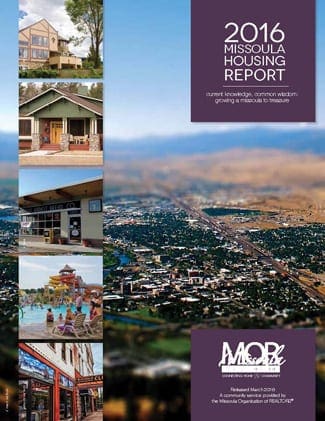 Missoula’s housing situation has improved greatly in many ways in the last few years, rebounding from the burst of the housing bubble. In 2015, sales were up, foreclosures were down, interest rates stayed low,and the market value of homes continued to increase. However, that strong real estate market, coupled with a growing population, also brings with it affordability and housing supply challenges.
Missoula’s housing situation has improved greatly in many ways in the last few years, rebounding from the burst of the housing bubble. In 2015, sales were up, foreclosures were down, interest rates stayed low,and the market value of homes continued to increase. However, that strong real estate market, coupled with a growing population, also brings with it affordability and housing supply challenges.
Both the number of sales and the median price of a home increased in 2015, with the median price hitting an all-time high of $238,700. Prospective homebuyers found a tight supply of affordable houses in Missoula, and many buyers opted to build instead, with lots sales and the median price of residential lots also increasing in 2015.
The Missoula housing market still faces a number of other challenges, mostly having to do with affordability and available supply. While several organizations are working hard to alleviate issues of affordability and homelessness, the demand for their services remains significant. The waitlist for Section 8 vouchers increased by 8 percent in 2015, and the homeless population was estimated to be around 500 people.
As the county’s population increases by about 1 percent each year, housing demand also grows. Missoula’s vacancy rate for rentals remains relatively low, and the cost of rent continues to increase. However, most of Missoula’s building permits in 2015 went towards multi-family units, which may help address the growing population.
Meanwhile, the data show that 54.3 percent of renters and 27.2 percent of homeowners spend more than 30 percent of their income on housing costs. (Ideally, they should spend no more than 25% of their income on housing.) This shows that Missoula still has a significant population that struggles to find affordable housing.
Overall, 2015 statistics showed many positive trends for the Missoula housing market and the economy, but they also highlighted a number of challenges for buyers and renters. With strong programs working on affordability and homelessness issues, it is clear that Missoula is striving to create a vibrant community that we can all call home.